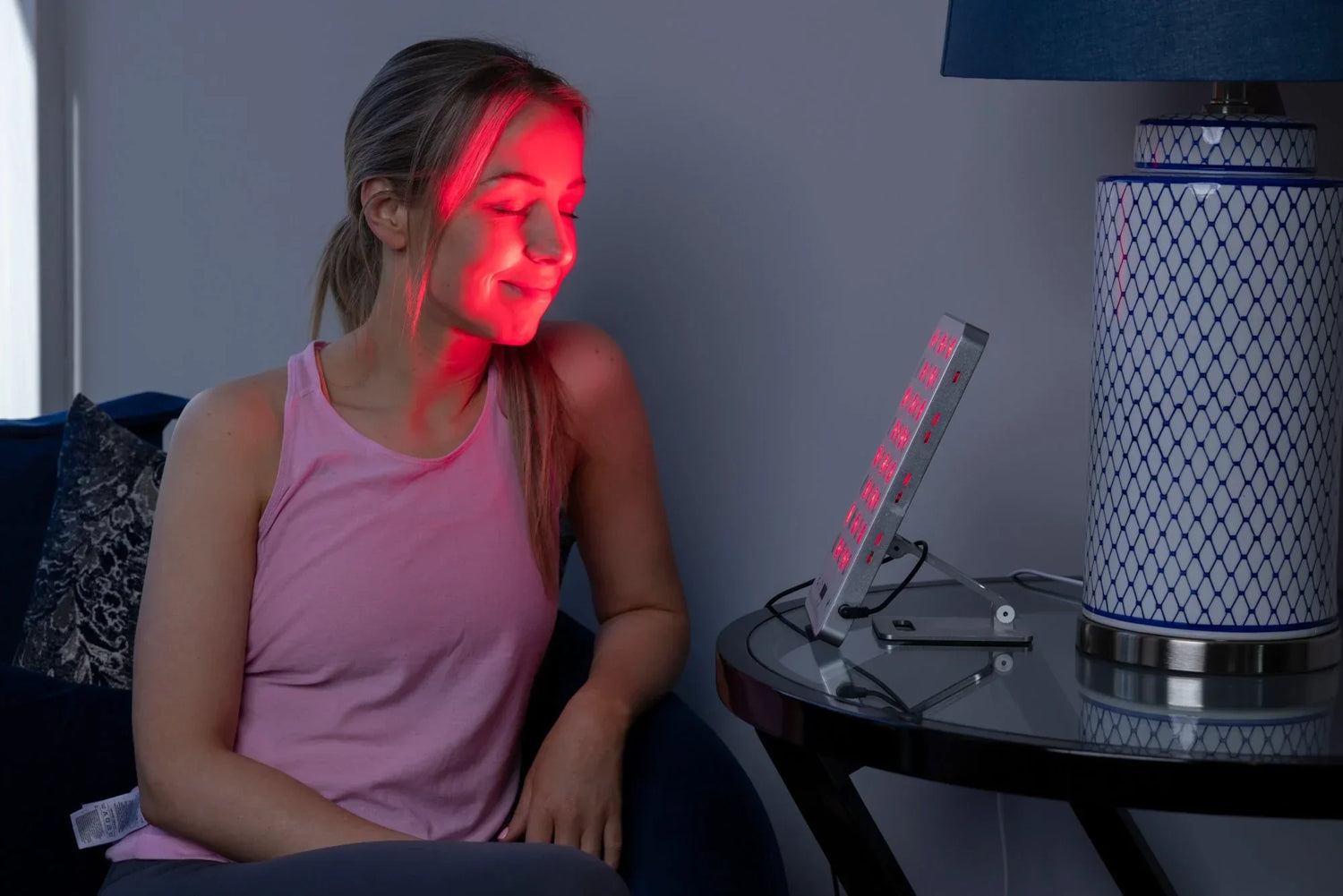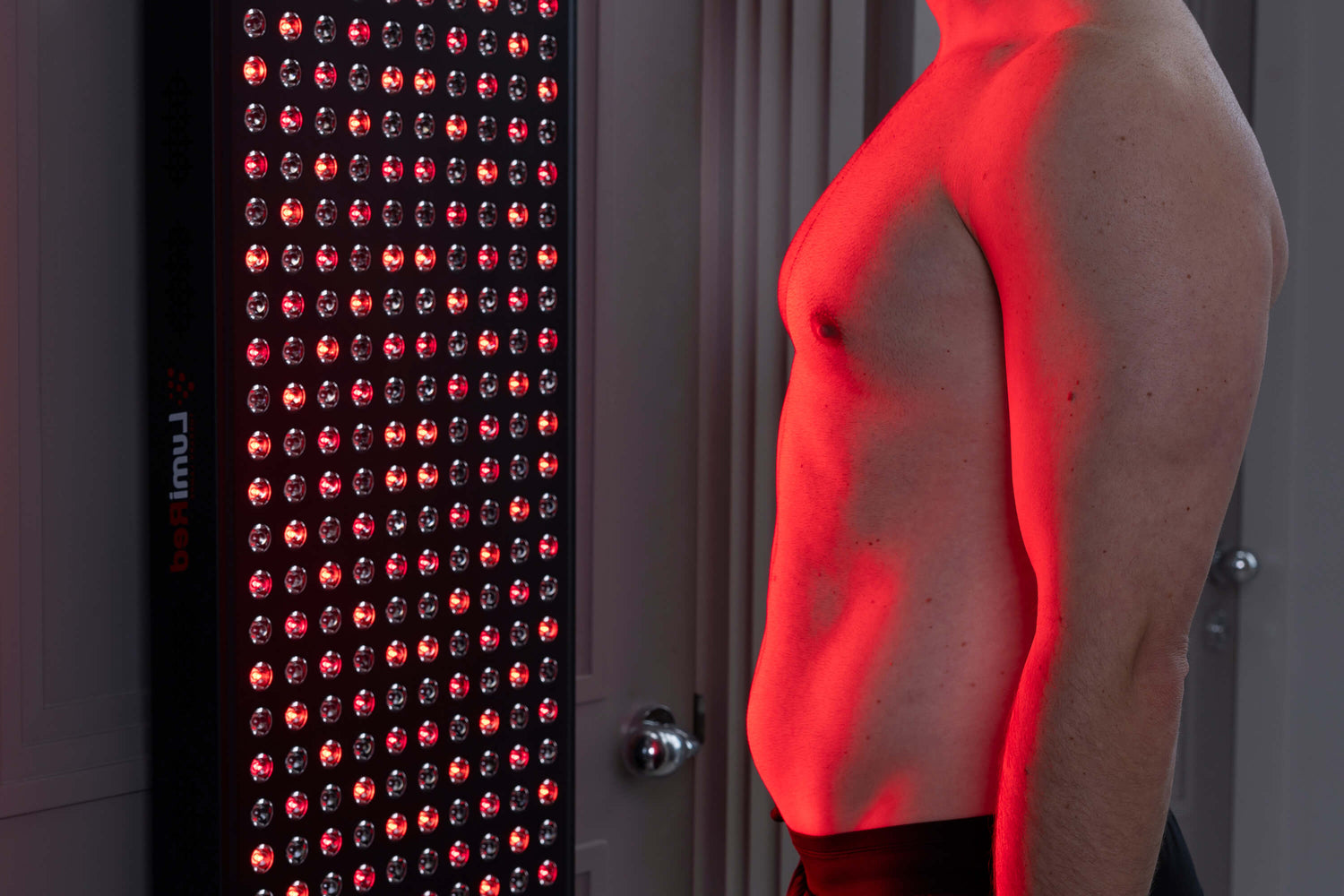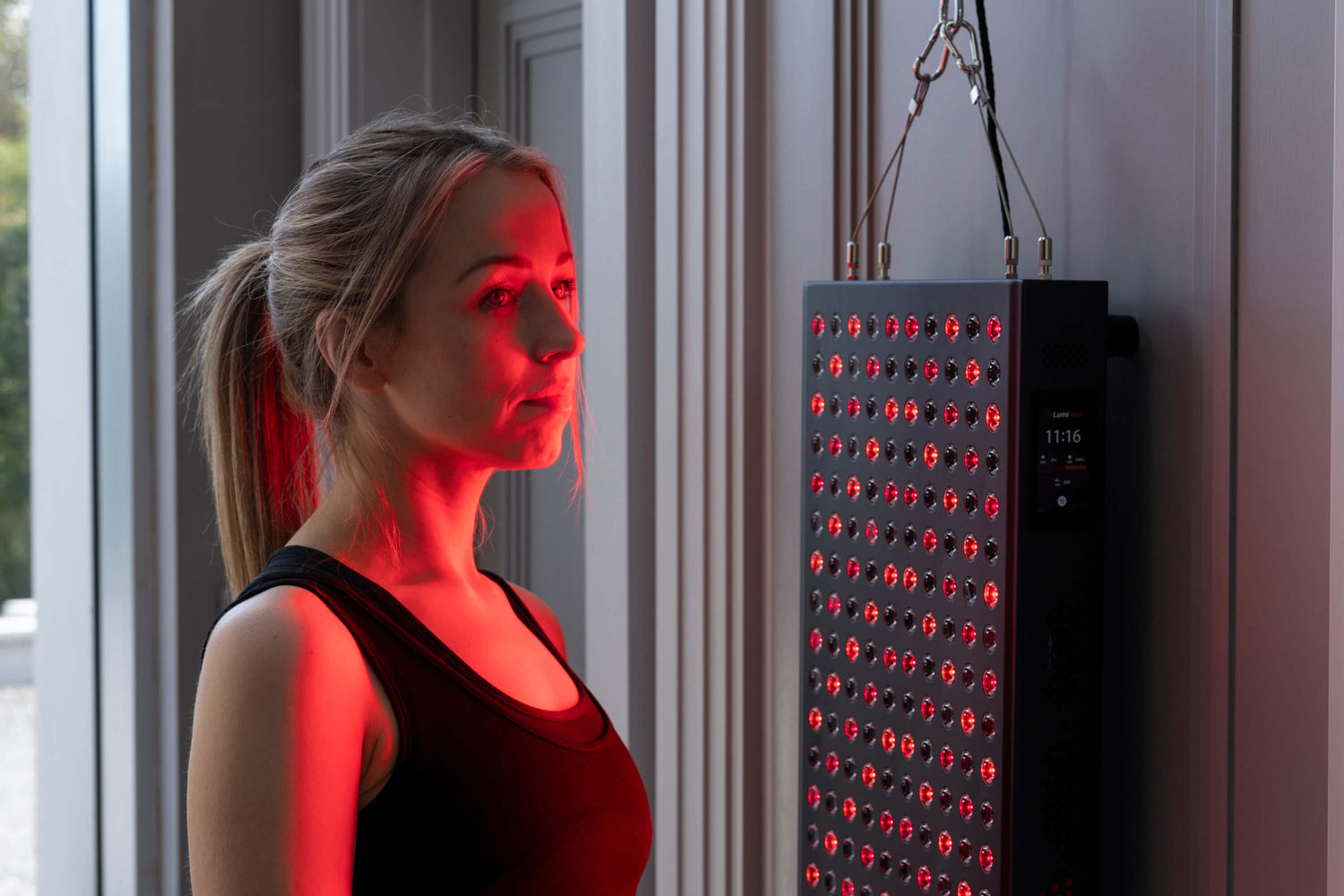Near-infrared (NIR) light and infrared saunas both fall within the broader spectrum of infrared light, but they differ in terms of application, wavelengths used, and how they affect the body
Wavelengths
Near-infrared light
This refers to wavelengths between approximately 700 nanometers (nm) to 1400 nm. Near-infrared light is closer to the visible light spectrum and is known for its ability to penetrate the skin deeply, reaching the soft tissues, muscles, and even bones. It's often used in therapeutic devices, such as handheld or panel lights, for treatment of various conditions. These wavelengths primarily stimulate cellular energy production within the mitochondria leading to a multitude of benefits in the body
Infrared saunas
Infrared saunas typically utilize a broader range of infrared wavelengths, including far-infrared (FIR) and mid-infrared (MIR). These saunas emit heat that includes wavelengths from around 5,600 nm to 10,000 nm (FIR) and 1,400 nm to 5,600 nm (MIR). Infrared saunas create an environment where the body absorbs the radiant heat, leading to sweating and potential health benefits associated with increased body temperature and perspiration such as detoxification.
Application
Near-infrared light therapy
Devices emitting near-infrared light are often used for targeted therapy, such as for skin rejuvenation, wound healing, pain relief, and tissue repair. These devices are smaller and designed for localized treatment areas. Larger devices can also treat the whole body for global, systemic benefits.
Infrared saunas
Infrared saunas consist of a larger enclosed space where individuals can sit or lie down. These saunas generate infrared heat that warms the body directly rather than heating the surrounding air, promoting sweating and potential detoxification benefits.
Benefits
Near-infrared light therapy
Benefits of near-infrared light therapy include improved skin health, collagen production, enhanced wound healing, reduced inflammation, and potential relief from muscle or joint pain.
Infrared saunas
Infrared saunas are believed to offer various health benefits, including relaxation, stress reduction, increased circulation, detoxification through sweating, potential weight loss (due to increased calorie expenditure), and temporary relief from muscle stiffness or soreness.
In summary, near-infrared light therapy devices target the body at a cellular level with their direct effect on the mitochondria, while infrared saunas provide a whole-body approach by using a wider range of infrared wavelengths to heat the body, promoting sweating and potential systemic benefits. Both have distinct applications and potential health advantages, but their usage and effects differ based on the method of delivery and wavelengths utilised.




